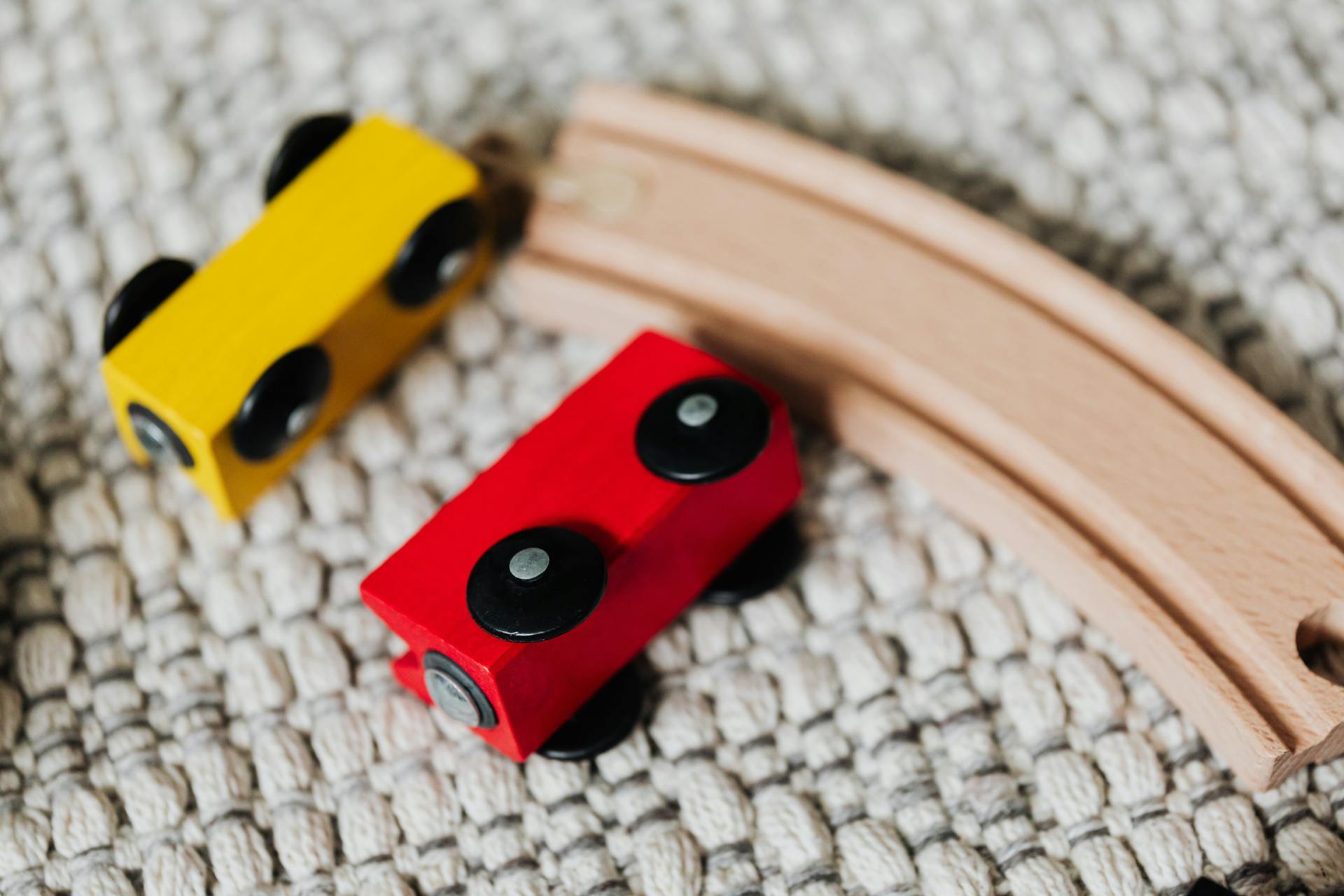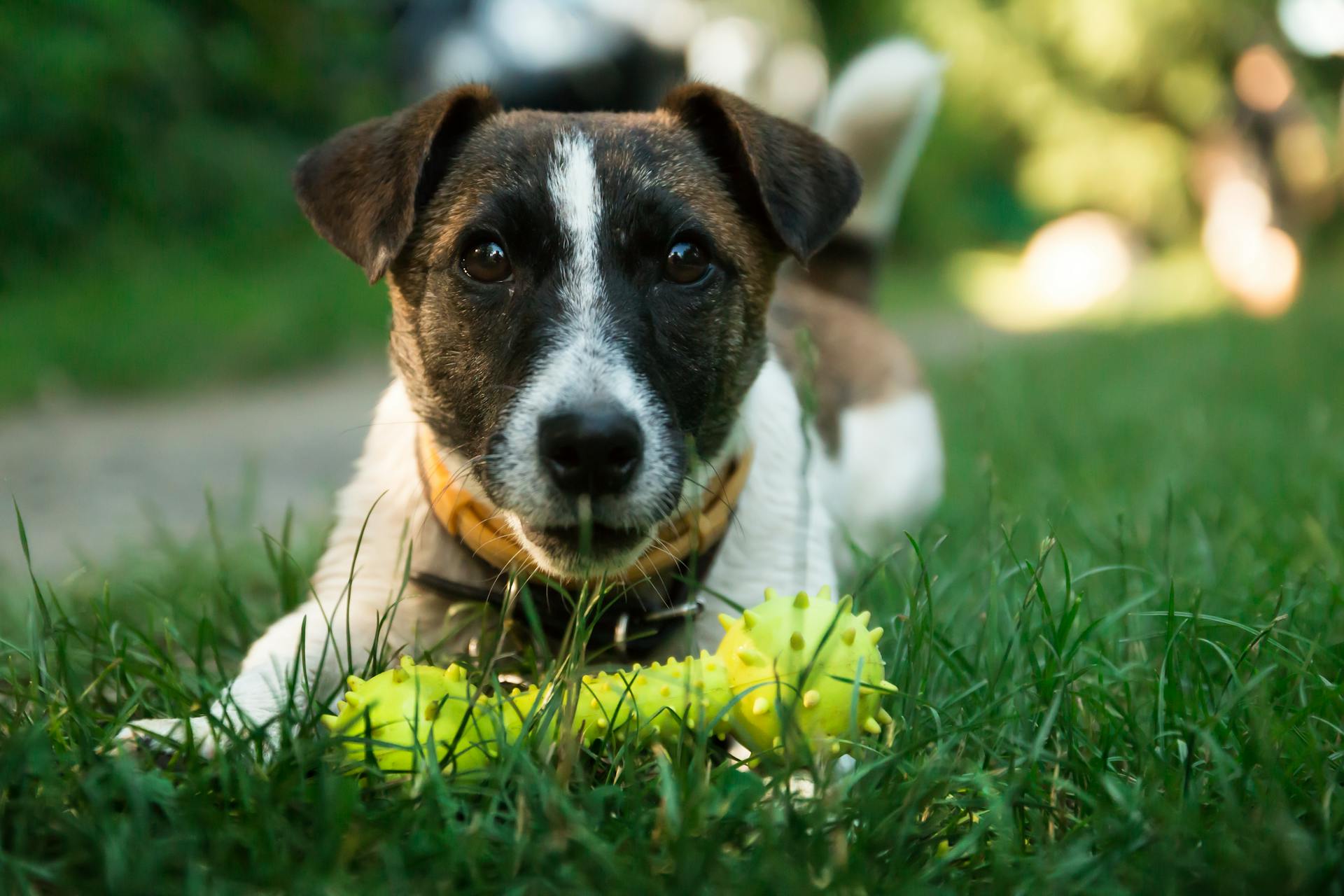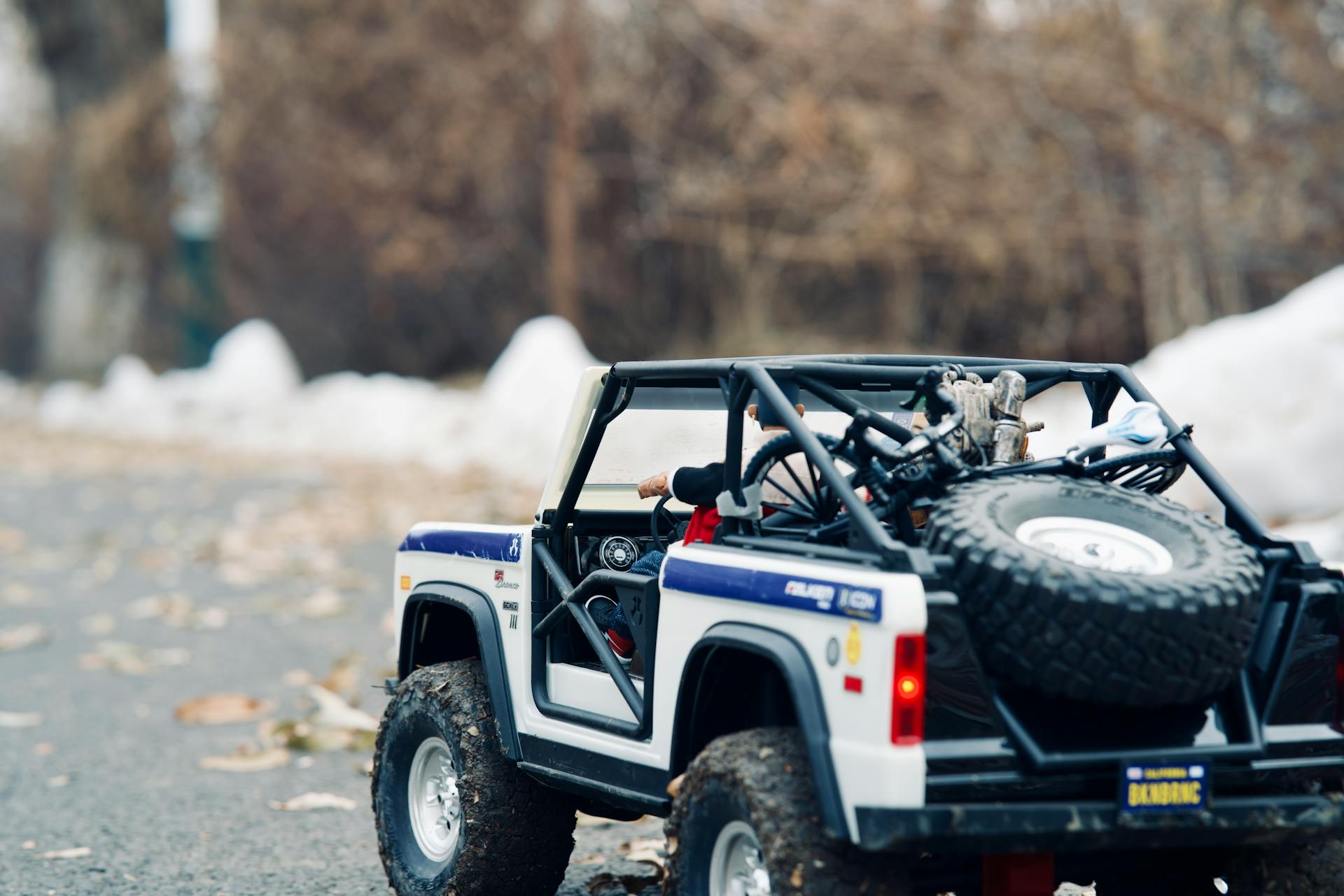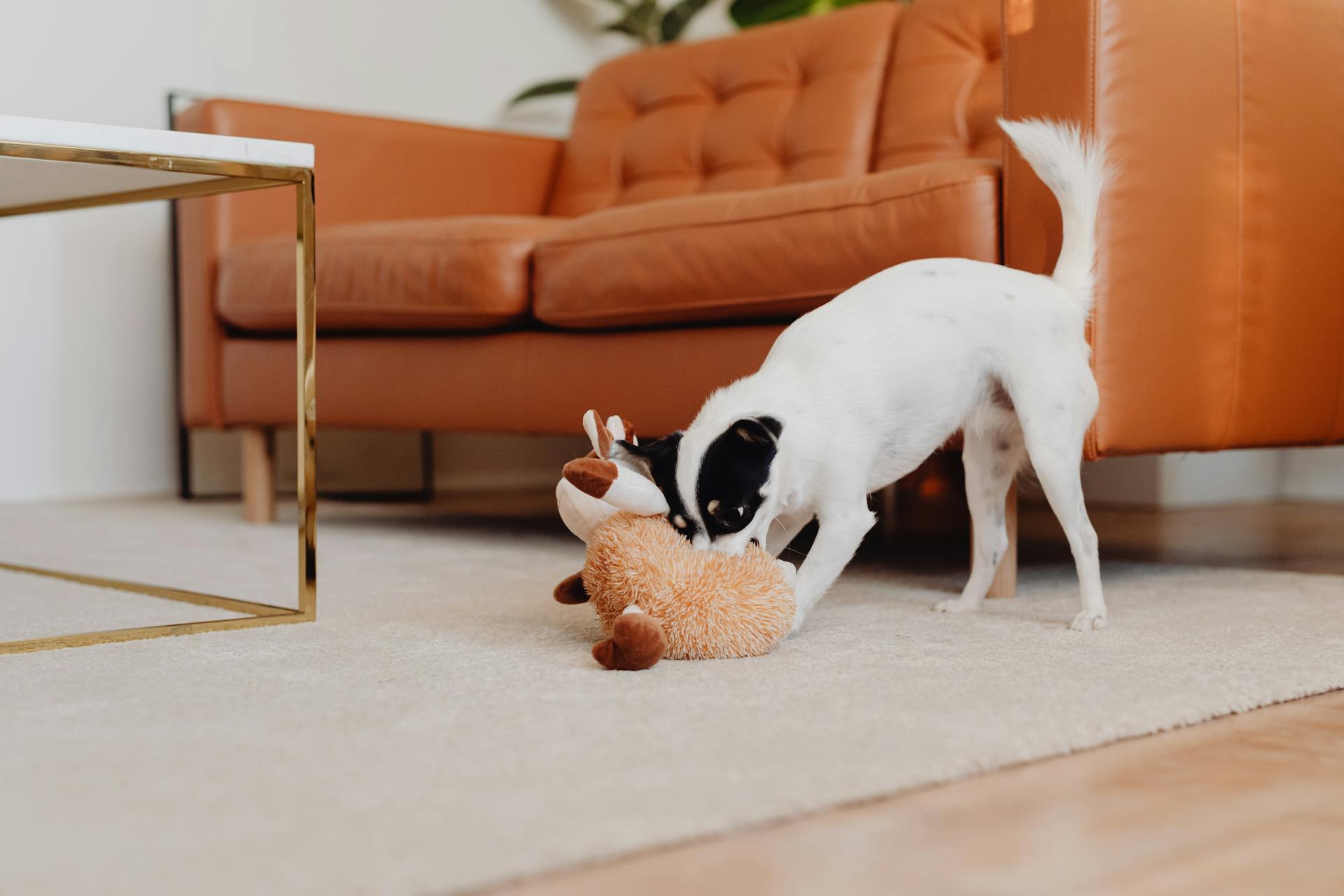
Dogs with high prey drive need toys that can withstand their intense chewing and biting.
These toys should be durable and long-lasting, made from materials like rubber or hard plastic.
Prey drive in dogs is often linked to their hunting instincts, which can be triggered by small movements or sounds.
Dogs with high prey drive may become fixated on toys that mimic prey, such as feather wands or laser pointers.
Understanding High Prey Drive
High prey drive is a natural trait in dogs, particularly in breeds like terriers, hounds, and herding dogs that were historically bred for their hunting skills. It's not a defect or a problem, but rather an instinct ingrained in them through centuries of selective breeding.
Dogs with high prey drive are hardwired to chase anything that moves, and it's not something you can simply suppress. It's essential to understand and work with their instincts, rather than trying to change their nature.

Recognizing your dog's breed is a crucial first step in managing their high prey drive. Different breeds have unique quirks and traits, and understanding these can help you guide your dog towards more acceptable behavior.
A high prey drive isn't just about chasing; it's also about the energy and playfulness that comes with it. It's what makes your dog alert, energetic, and playful, and it's an integral part of their identity.
If you don't provide your dog with a controlled outlet for their prey drive, behavior problems can arise. This is why offering play as a way to satisfy their prey drive is good for their well-being and can keep them more engaged and responsive to you.
Managing Your Dog's Behavior
Managing your dog's behavior is key to preventing unwanted chasing and ensuring a safe and enjoyable walk for both you and your furry friend. Recognize that every dog breed is unique, and some breeds like terriers, hounds, and herding dogs are more prone to high prey drive due to their historical breeding for hunting skills.

Understand that your dog's high prey drive is not something to be changed, but rather guided towards more acceptable behavior. This means accepting your dog's instincts and working with them, not against them. Get to know your dog's breed to gain insights into their behavior and manage their prey drive more effectively.
To manage your dog's high prey drive, it's essential to satisfy their instinct through other acceptable activities. Try sports like Treibball or Disc Dog, or play at home with toys like a Flirt Pole or a Chase 'N Pull. Teach your dog a cue for starting and stopping play to help them associate those words with permission to chase something acceptable.
On walks, divert your dog's attention to a rubber toy by squeaking it and tossing it away from what they want to chase. Use the cue you've practiced at home to help them associate the toy with acceptable play. Some dogs may get addicted to one toy, so it's essential to rotate toys and keep playtime interesting.
Positive training classes can teach your dog alternative behaviors and impulse control. In class, you'll learn skills like Watch Me, Leave It, targeting, and coming when called. Practice these skills without distractions, then with increasing distractions, so they'll work when you need them.
Additional reading: How to Teach Your Dog to Drive?

Leash training is also crucial in managing your dog's prey drive. Start by practicing in a controlled environment, like your backyard, and gradually move to areas with more distractions. The goal is not to prevent your dog from reacting to stimuli, but to teach them to respond to your commands even when their instinct tells them otherwise.
Using the right toys can also help manage your dog's high prey drive. Toys that move unpredictably, like bouncy balls, can simulate the thrill of a chase and satisfy your dog's instinct without involving actual prey. These toys can strengthen the bond between you and your dog while helping them channel their energy in a controlled environment.
Reducing Prey Drive
High prey drive in dogs can be a challenge to manage, but it's not impossible. To do this, it's essential to keep your dog from practicing the behavior, which means not leaving them outside where they can chase small animals.

Some dogs will revert to a state called Predatory Drift, where their instincts take over, and they may stalk, chase, and shake smaller dogs. This is something you definitely want to avoid.
The best way to reduce or control prey drive is through training and safety precautions. Many dogs with a reasonable level of prey drive can be engaged with play and games like fetch, which provides a healthy outlet for their instincts.
You should also stay away from dog parks or other off-leash play areas where smaller dogs are around, as these can trigger a high prey drive response.
A fresh viewpoint: Dog Play
Mental Stimulation and Training
Mental stimulation is a game-changer for dogs with high prey drive. It can help redirect their energy and reduce unwanted behaviors.
Changing your pace on walks can keep your dog's attention focused on you. Try going from a slow saunter to a fast walk and every pace in between.

Rotate in different directions, take detours around obstacles, and make sudden turns to keep your dog on their toes. This unpredictability will keep them engaged and prevent them from noticing what's out there.
Positive training classes can teach your dog alternative behaviors and impulse control. You'll learn skills like Watch Me, Leave It, targeting, and coming when called.
Brain games and puzzles can keep your dog's mind active and challenged. This can range from simple hide and seek games to more complex puzzle toys.
Mental fatigue is just as important as physical exhaustion for dogs with high prey drive. Keeping their minds busy can lead to a positive change in their behavior.
Practice new skills without distractions first, then gradually introduce increasing distractions. This will help your dog develop the skills they need to succeed.
Patience and Understanding
Patience and understanding are key to managing your dog's high prey drive. It's a journey that requires patience, understanding, and consistency.

Every little bit of progress counts, so take a deep breath and celebrate the small victories. There will be days when progress seems slow, or when you feel like you've taken a step back.
Understanding your dog's instincts, breed, personality, and needs is crucial. A high prey drive isn't a defect or a problem, it's simply a trait that's been ingrained in them through centuries of selective breeding.
As pet owners, our role is to channel these instincts constructively, not to suppress them. We guide, we train, and most importantly, we adapt to our dog's unique needs.
Curious to learn more? Check out: Dogs Gums Bleeding When Chewing Toy
Frequently Asked Questions
What sports are good for dogs with high prey drive?
Dogs with high prey drive excel in high-speed sports like lure coursing, which mimics the thrill of the chase and showcases their agility and speed
Sources
- https://us.tug-e-nuff.com/blogs/news/how-your-dog-s-evolutionary-prey-drive-can-power-up-your-play
- https://yourdogsfriend.org/help/chasing/
- https://blackpearldogs.com/9-proven-strategies-for-managing-your-dogs-high-prey-drive/
- https://www.leaveit.com.au/dog-lifestyle/what-is-dog-prey-drive-4-signs-of-prey-drive-how-to-control-it/
- https://packleaderdogtoys.com/pages/about-us
Featured Images: pexels.com


